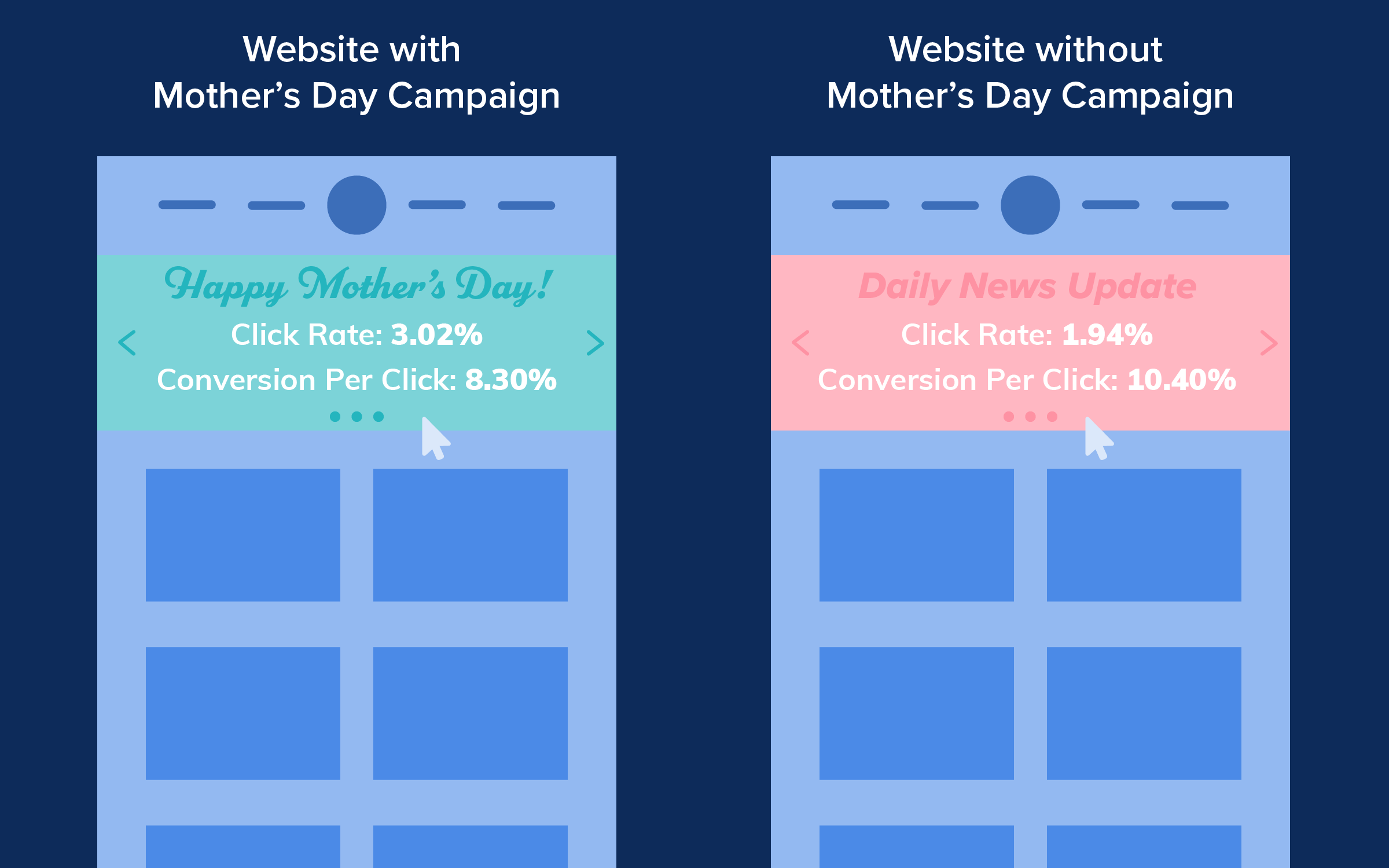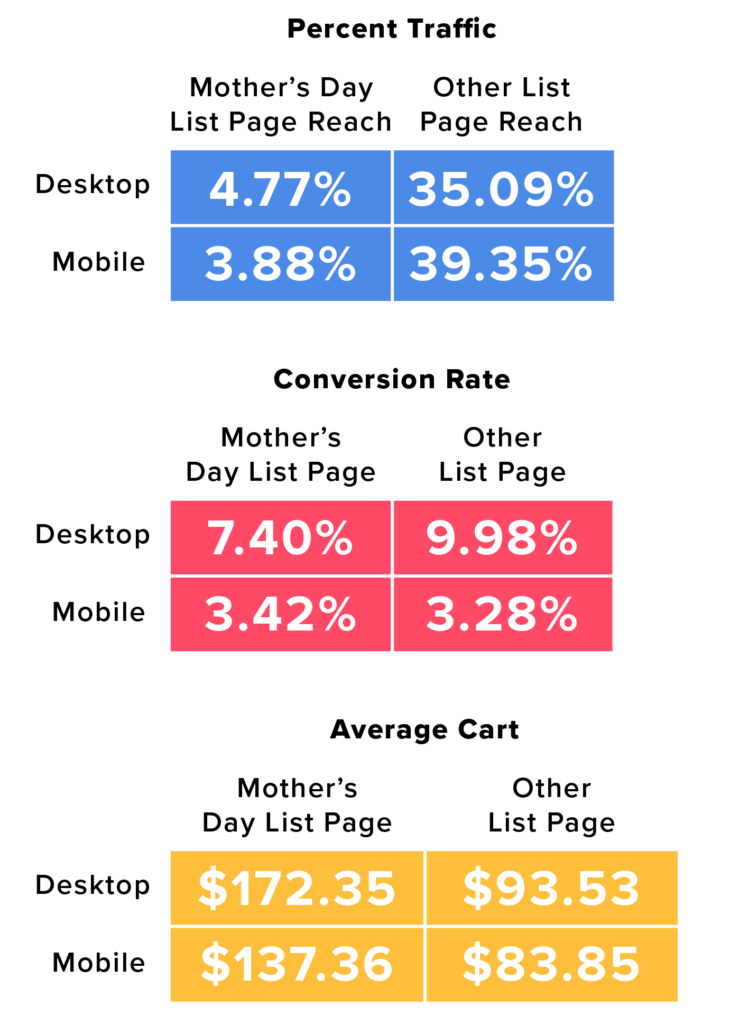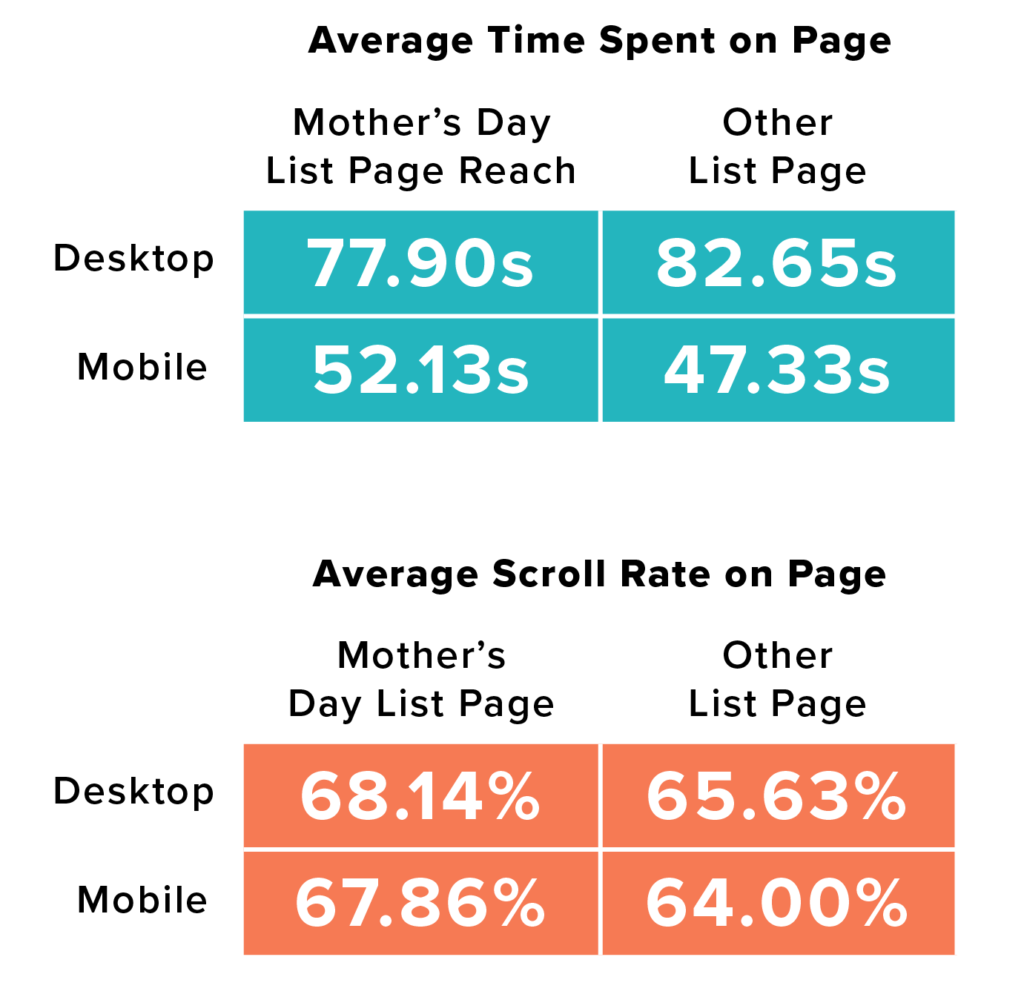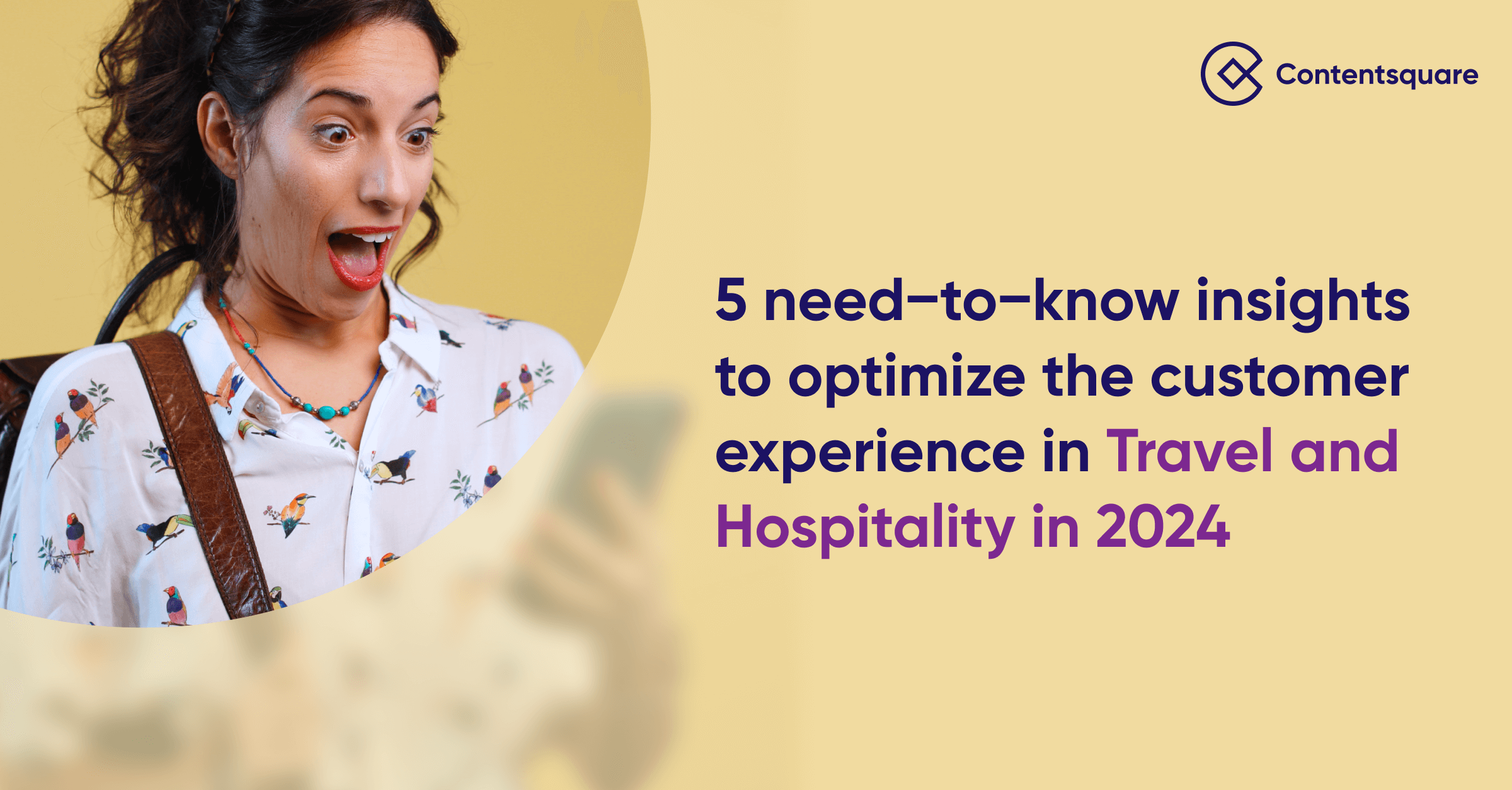Are Mother’s Day Campaigns Worth It? What 53 Million Sessions Reveal About Digital Gifting For Moms

- Mother’s Day Campaigns Defined
- Websites with Mother’s Day Campaigns Convert Better
- Mother’s Day Campaign Carousel: Higher Click Rates, Lower Conversions Per Click
- Mother’s Day Product Category Pages Get Less Traffic But Driver Higher Carts
- Mother’s Day Campaigns Have Higher Page Attractiveness
- Pro Tip: Make The Most of Higher-Than-Average Carts With Gift Sets
But how do Mother’s Day campaigns impact conversions? Are visitors clicking on these special promotions? In short, is producing all this Mother’s Day-related content really worth it?
We analyzed 53 million visitor sessions on fashion, luxury, beauty, technology and jewelry sites to see how digital consumers browse for gifts during the Mother’s Day shopping season.
We paid particular consideration to elements like homepage carousels and category pages to paint a clear picture of how Mother’s Day campaigns contribute to traffic, conversions and other KPIs.
Mother’s Day Campaigns Defined
What exactly constitutes a Mother’s Day campaign? We’re glad you asked. For the purpose of our research, it is defined as a specific site element (think slideshows, sliders, etc.) or landing pages that highlight Mother’s Day and lead visitors to a product list page with specialized gifts for the holiday.
Here are 4 findings we’ve culled from our arsenal of original data in the retail space during the Mother’s Day shopping season.

An example of a Mother’s Day campaign from Avon, wherein clicking on the slideshow leads visitors to a product list page.
Websites with Mother’s Day Campaigns Convert Better
Conversions. The raison dêtre of any brand, digital or otherwise. Our data shows that brands that implement Mother’s Day campaigns yield higher conversion rates and generate more revenue than brands that don’t.
In the lead-up to the special day, brands advertising Mother’s Day gifts saw a 211% boost to conversions. This increase in sales also hiked up the revenue for these brands by 22%. Meanwhile, the average visitor shopping cart was 1.28% higher for those browsing sites that made a special effort for Mother’s Day.
So far, so good. So how do you get visitors to consume and act on all this specially-created content?
Mother’s Day Campaign Carousel: Higher Click Rates, Lower Conversions Per Click
We looked at how visitors were interacting with homepage carousels to see whether giving this prime website real estate a Mother’s Day makeover was a winning strategy for brands. With a 3.02% click rate, Mother’s Day banner images drive higher interaction than other carousel images at a 1.94% click rate — that’s 54.87% more clicks for Mother’s Day content.
While Mother’s Day carousel images may reel in interest and curiosity among site visitors, they do not always drive more sales. With a 10.4% conversion rate per click, non-Mother’s Day banner images have a bigger impact on conversions than Mother’s Day banners, which carry an 8.3% conversion rate per click.
So with visitors clicking on Mother’s Day carousels, but not necessarily converting, what kind of data do you need to look at next?

Mother’s Day Product Category Pages Get Less Traffic But Driver Higher Carts
Next, we peered at the pages where conversions occur: product list pages. A comparison of Mother’s Day product list pages with regular category pages reveals that consumers are more likely to reach the latter. Regular product list pages get 7 times the traffic of Mother’s Day product list pages on desktop and 10 times the traffic on mobile.
But while Mother’s Day list pages may get fewer views, visitors who browse these pages have deeper pockets than regular shoppers, resulting in higher than average carts for these pages. Average carts for shoppers who reached the Mother’s Day category page on desktop were 84.28% higher than those who didn’t, while average carts on mobile increased by 63.82%.
Additionally, higher carts have reached higher conversions — on mobile at least. Mobile visitors who reach the Mother’s Day product list pages are 4.2% more likely to convert than those who reach the regular category pages. However, desktop conversions on other list pages beat out Mother’s Day list page conversions by over 20%.
Gift recommendations and products in packages generally make for a good strategy to increase average cart increases for Mother’s Day.

Mother’s Day Campaigns Have Higher Page Attractiveness
Overall, visitors displayed higher engagement with Mother’s Day content than with non-holiday content, and were more likely to click, hover and scroll on these pages. The scroll rate alone was 6% higher on mobile and 4% higher on desktop.
In fact, the overall activity rate for Mother’s Day category pages was 12% higher than on regular category pages, showing that inspirational content does have the ability to captivate visitors’ attention.
The only KPI these pages did not outperform their non-holiday counterparts on was the average time spent on page on desktop, with visitors spending 6% less time on them. Mobile visitors, however, were willing to spend 9% more time browsing gifts for their mothers than other items.

Pro Tip: Make The Most of Higher-Than-Average Carts With Gift Sets
According to the National Retail Federation (NRF), the world’s leading retail association, which hosted its Big Show in 2019 that Contentsquare took part in, US customers are predicted to spend $25 billion on Mother’s Day in 2019. In short, Mother’s Day campaigns are not to be missed.
Per our research, brands featuring dedicated Mother’s Day campaigns fared better than those without them in several regards: increasing conversions, driving more revenue and recording higher-than-average carts. Revenue alone was 1.95% higher in April for sites with Mother’s Day promotions, presenting a retail opportunity to uplift conversions through new campaigns.
An increase in scroll and activity rates shows that consumers are willing to engage with Mother’s Day campaigns, and brands should see the holiday as an opportunity to highlight unknown products and push inspirational content.
Mother’s Day shoppers have twice the average cart of those browsing regular category pages and are clearly willing to spend money on their moms. This audience will gladly splurge on a gift set so make sure you have those options available.


